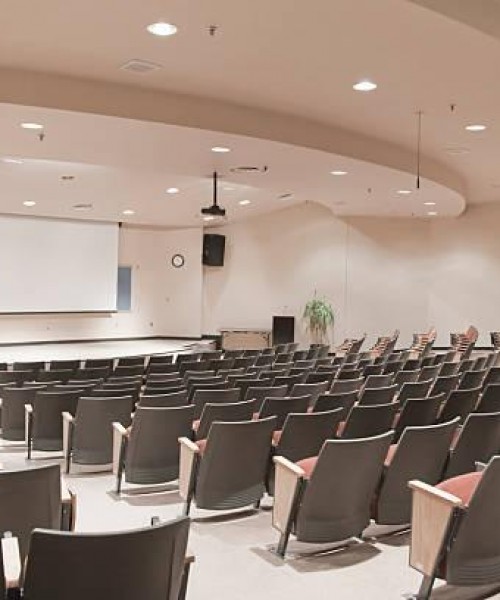1.2.2. Problems concerning the Main contractor
Sub-contractors, usually have more than one site running concurrently. Seeing as there might only be one Safety officer it will be difficult for the safety officer to service all the sites on time. On certain sites, safety talks have to be held once a week whilst others allow for them to be done once a month as in the case of Mthatha Central Police Station. This makes it very difficult on one Safety officer to be monitoring all sites at once.
As stated in the Occupational Health and Safety Act the management of a company must provide all personal protective clothing (PPC) and equipment (PPE) for their workers, free of charge. Most management structures try to avoid these costs and make the workers, who are unaware of their rights, pay for their PPC/PPE. I have witnessed the aforementioned first hand.
Management has also seen the conditions of health and safety as costly and therefore did not wish to invest too much money in it. This will relate to the fact that one Safety Officer was allocated to over seven concurrent sites. A qualified Safety Officer will earn around R8000 to R12000, depending on the company. For a company to hire another Safety Officer it will be very costly as the cost will double for the workload to be split. Management is not always very keen to hire more staff if it's not completely necessary.
Most workers speak either Zulu or Xhosa. With our safety officer having little or no lingual knowledge in the mother tongue created a communication barrier when she had to convey information concerning health and safety on site.
1.2.3 Poor Housekeeping On Construction Sites.
What is good housekeeping?
Efficient production and a good working environment are complementary. The elimination of inefficiencies and accident hazards caused by unfavourable conditions in and about the workplace is essential in getting the job done properly and safely.
The attention to these important details -which may be overlooked when management's attention is concentrated upon fast production, is widely referred to as good housekeeping.
Good housekeeping involves every phase of construction operations, and should apply throughout the entire site, indoors and out. It is more than mere cleanliness. It requires orderly conditions, the avoidance of congestion, and attention to details as an orderly layout of the whole site.
Why good housekeeping matters?
A clean , well-ordered, attractive work environment sets the tone of the construction Site. It encourages tidy work habits in employees. It helps reduce fatigue. It promotes good worker-management relations. It also gives a lift to morale, which is reflected in the quality of production and overall efficiency.
Good housekeeping is also a good advertisement for your company. Clients and customers have more confidence in an organisation when they see work being carried out efficiently in clean, well ordered surroundings.
There's an even more important reason why good housekeeping matters. It makes the undertaking a safer place to work in.
Stop accidents through good housekeeping
Good housekeeping is a vital factor in preventing accidents. The majority of all work accidents are caused during the handling of goods or materials, and by people falling ( From Scaffolding, falling Into Excavations, falling of buildings) being hit by falling objects, or striking against objects in the workplace. All these causes can be reduced by good housekeeping practices. In fact good housekeeping is the cure for most accidents which occur on construction sites.
Here are some kinds of accidents commonly caused by bad housekeeping:
Tripping over loose objects on floors, stairs and platforms.
Articles dropping from above.( Bricks, scaffolding, tools etc).
Slipping on greasy, wet or dirty surfaces.
Striking against projecting, poorly stacked, or misplaced material
Tearing the hands or other parts of the body on projecting nails, wire, steel strapping on bails or crates etc)
Typical examples of poor housekeeping that lead to these accidents are:
Negligence
Excessive material, waste or chips in the working area
Congested work areas
Tools left on machines
Waste containers overflowing
Lockers and workrooms in disorder
Toxic acids in open containers
Broken Glass
Electric leads or air lines across walking areas
1.2.3. Problems concerning the workforce
The main issue relating to health and safety with the workforce is the language barrier. As we have established that most workers have a first language of either Zulu or Xhosa, with little or no understanding of English. This hinders the relaying of vital health and safety information to them.
Then there is the fact that most of the workforce come from an underprivileged background and are not highly educated. This affects the learning process on site when workers are being trained to perform tasks in accordance to health and safety standards. When workers find it difficult to interpret the message of health and safety, errors occur in executing tasks in a safe manner and therefore lead to incidents or injuries some of which may be fatal.
Many workers work under some form of apprenticeship, learning and acquiring techniques from their superiors. This is not always the best way as they tend to pick up bad habits, which are easy to adopt, when it is the easiest and least stressful way to execute a task. Workers are then set in their ways; which may not be in the best interest of health and safety. So now when safety calls for changes in performance to tie in with the correct safety procedures, it is virtually impossible to get the workers to change their bad habits.










